A chicken ladder is a great way to provide more roosting space for your flock without taking up any extra square footage in the coop. The chicken ladder is also inexpensive and easy to build making it a perfect DIY for your homestead.
Chicken Roosting Bars
Chickens will instinctively get to the highest point they can to roost at night. This is their defense against predators. Free-ranging chickens will climb high up in the trees at night to stay safe.
When you’re designing your coop, roosting space is the most important consideration you should make. This will determine how many chickens can be safely housed in your coop.
Roosting bars are a great way to maximize the square footage of your coop, and a roosting ladder will help to maximize that space further.
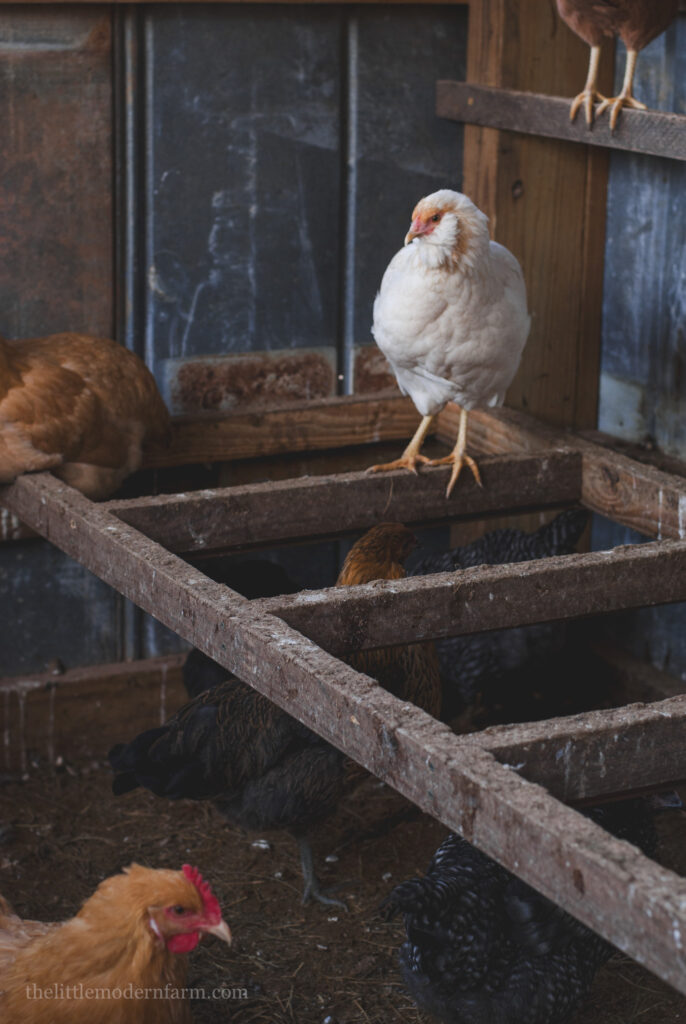
*This post may contain affiliate links which means I make a small commission at no extra cost to you. Read my full disclosure here.*
Chicken Roosting Space Requirements
The roosting space you’ll need per bird will vary depending on the breed of chicken you have. Large breeds will require more space than smaller breeds. 12” per bird is a great place to start for a roost.
I have a mixed flock of chickens. Some are much larger than others. I plan for 12” per bird, but the chicken ladder will comfortably support many more than that.
Check out my post on keeping chickens for more information on chicken coop roosting requirements.
Benefits of a Horizontal Chicken Ladder
Chickens have complex social relationships. They will naturally establish a “pecking order” with social rank within the flock. The most interesting part of this to me is their size doesn’t impact this pecking order. I have small bantam breeds that are dominant over my larger breeds.
If you have a stair-step chicken ladder, the dominant birds will be on the highest roost. This creates a lot of bickering come nightfall. If you are curious, watch your chickens go to roost at night, and you’ll see a lot of flock drama.
A horizontal chicken ladder helps, but doesn’t eliminate, the bickering. While there are still preferred spots to roost, there isn’t competition to get to the highest point.
Another benefit of a horizontal ladder is that it decreases the spacing between the bars. With a stair-step ladder, the bars have to be spaced so that the lower chickens don’t get manure on them. This isn’t as much of a concern with the horizontal ladder.
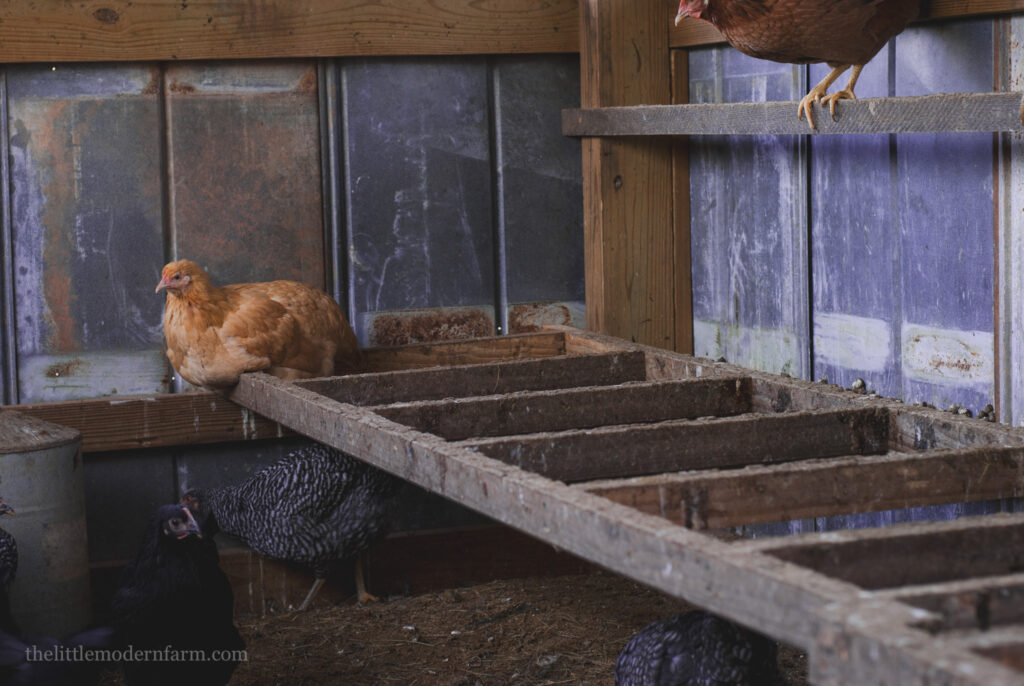
Why You’ll Love This Chicken Ladder
It’s inexpensive. We built ours by ripping scrap wood. If you’re buying the wood new, it doesn’t take much to create the ladder.
It’s easy to build. My husband built and installed the ladder in about an hour one afternoon. It’s a great project for a beginner.
Compared to conventional roosts, it provides more roosting space for your chickens. This will allow you to house more chickens in your coop, especially if you have an outdoor run or your free range during the day.
Taking into account 12 inches of space per chicken, each ladder section is 27” across and 14 inches between the bars. It can comfortably roost 14 chickens on the bars alone and 16 chickens down the length of the 8-foot ladder. That’s a total of 30 (or more) chickens on an 8-foot ladder.
McMurray Hatchery has a great post on chicken roosts.
How to Build a Chicken Ladder
I’m sharing the material we used to build an 8ft chicken ladder with the roosting bars set to 14-inch centers. We have large chicken breeds. If you have smaller chicken breeds you could easily set the bars on 12” centers.
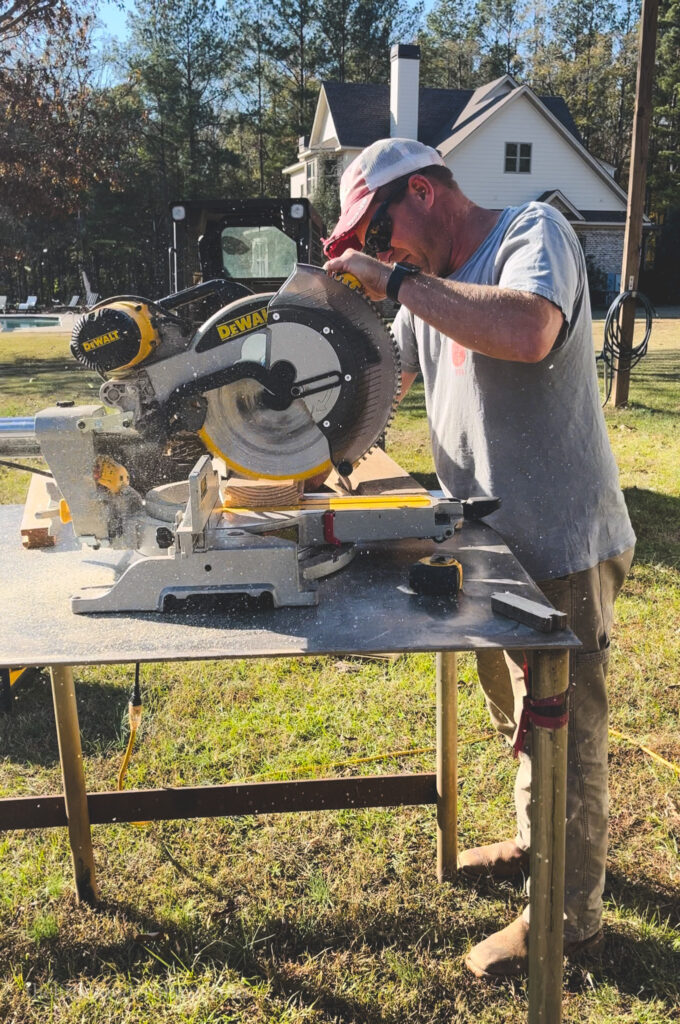
Materials for a chicken ladder
- –Drill
- – 3-inch exterior deck screws
- -Saw. (hand saw, miter saw, circular saw, table saw, any of these will work) You can use a hand saw to cut the rungs. We used a table saw to rip the pieces of scrap lumber we had lying around to make 2x2s.
- – 4- 2”X2”x8’ boards. This will vary depending on how long you want your ladder to be.
- -Wood for support. Again this will vary depending on how long you want your ladder to be.
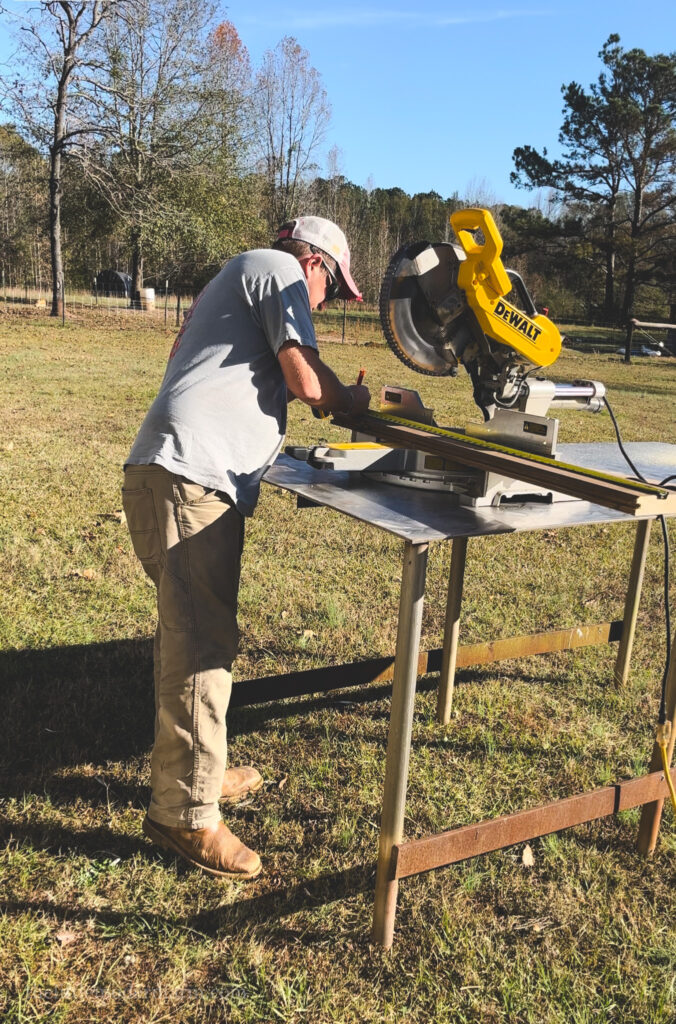
Directions
- -Begin by measuring your coop dimension and deciding where you want your ladder. This will effect how much of the materials you need to purchase.
- -The roost needs to be at least 18” above the ground. You could certainly go higher if you’d like. My roost is set at about 2 feet off the ground. This allows the chickens to freely walk underneath it while it’s not in use.
- – After you’ve measured how long you want your roost, and taken into consideration 12” of roosting space per chicken, prepare your boards.
- -If you’re splitting boards like we did, you’ll need to sand the boards down a bit so the chickens don’t injure or splinter their feet.
- – We cut 2’ rungs out of the 8’ board
- – Next, mark the distance between the rungs on the 8-foot boards. You can mark 14-inch or 16-inch centers depending on how large your chickens are.
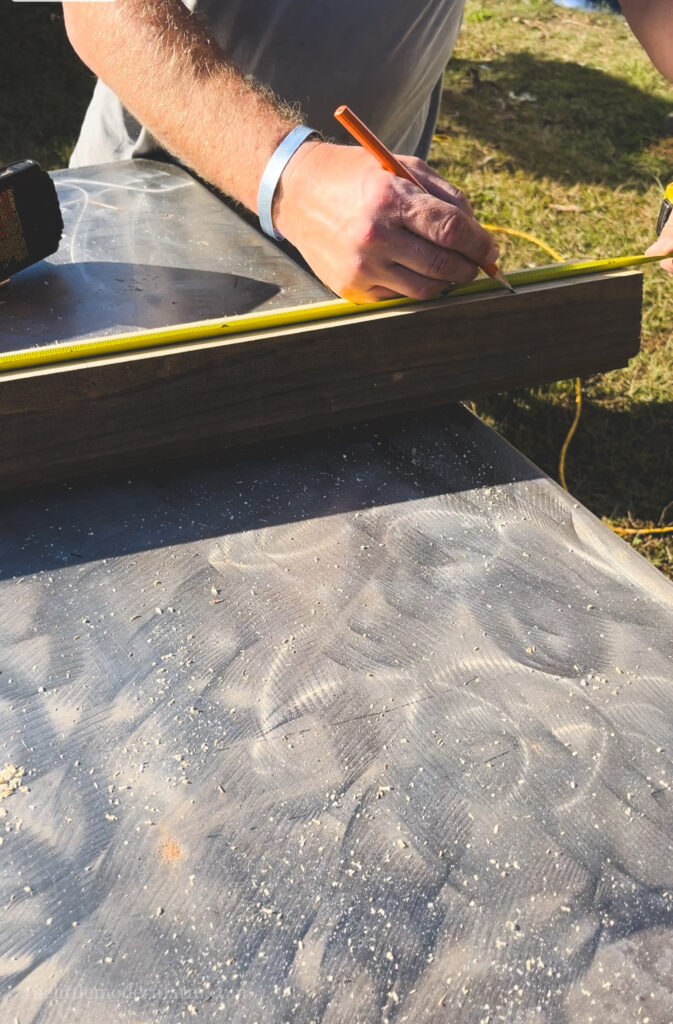
- -Once the centers are marked, start screwing roosting bars into place. Two screws per bar are best so the bars don’t roll when the chickens sit on them.
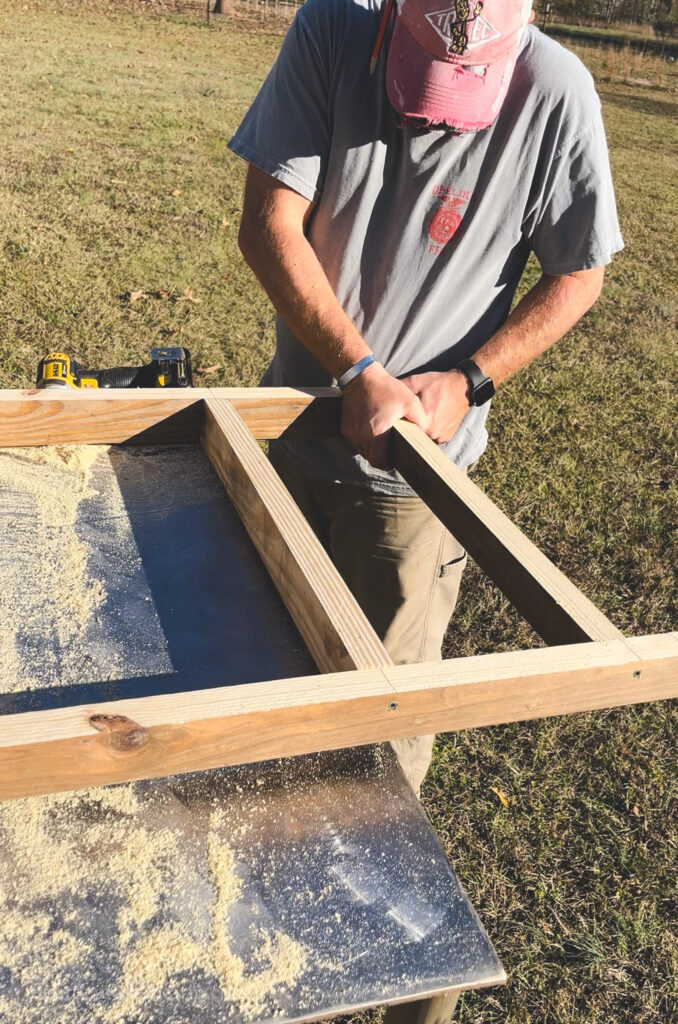
- **NOTE: depending on the size and headroom in your coop, some assembly needs to take place inside the coop. We have a large coop so we were able to fit the ladder easily through the door.
- – Install the ladder by securing both ends of the coop structure. If this isn’t a possibility in your coop, you may need to add support legs to the ends of the ladder. These can either be screwed to the floor of your coop, or staked into the grown
**I also suggest adding support on the 4-foot center length of your ladder. If you have heavier chickens, the ladder can start to sag.
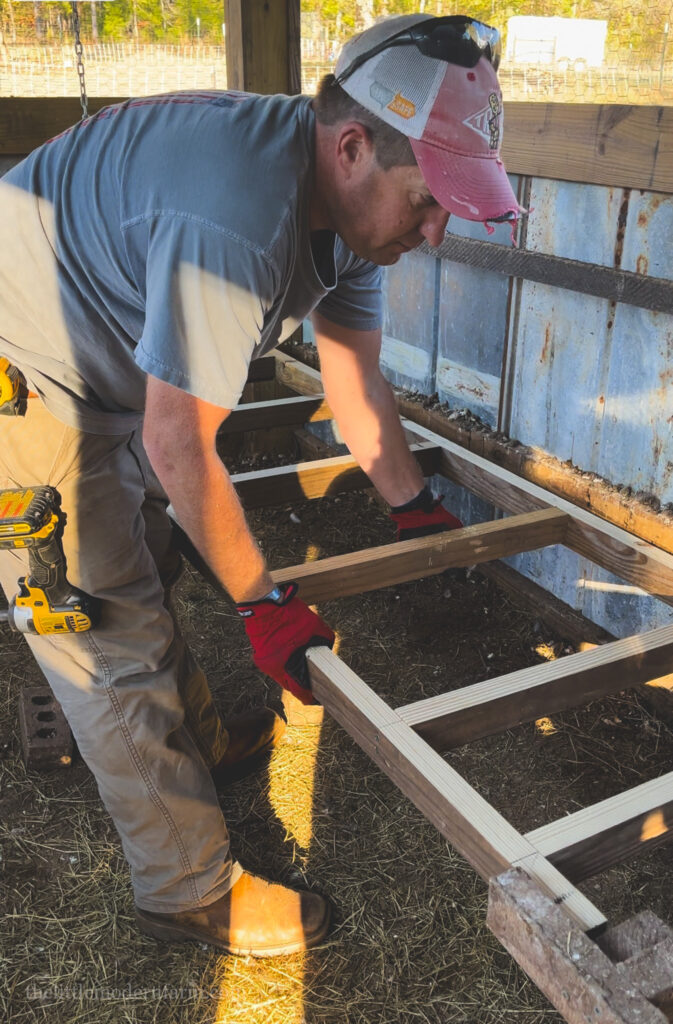
FAQs
How far apart should a chicken roosting ladder be spaced?
The roosting bars on the horizontal ladder should be at least 12 apart. This will allow plenty of space between the bars for each chicken. If you have larger birds, you can space the horizontal ladder 14 inches apart.
Will chickens roost on a 2×4?
Chickens need a flat surface for their feet, especially in colder weather. This allows them to keep their feet warm under their body. They need a minimum of 2 inches to roost, but a 4” roost is even better.
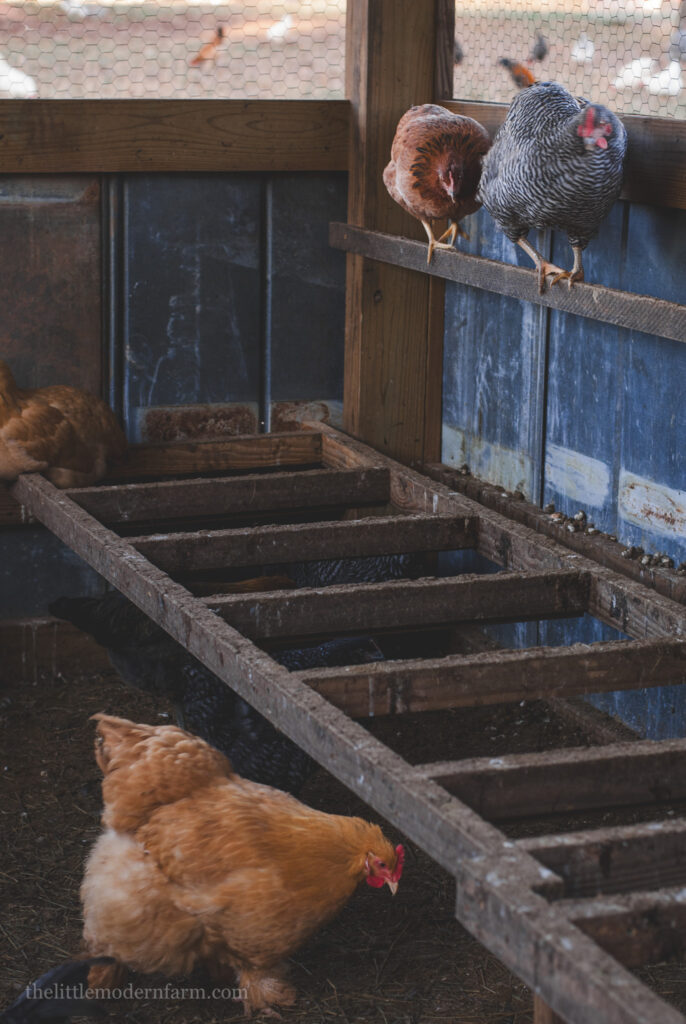
Final Thoughts
A horizontal roosting ladder is a great way to maximize the roosting space in your chicken coop. It’s inexpensive and easy to buy and will keep your chickens happy for years to come.
If you enjoyed this article, please share it! Thanks for visiting my farm!
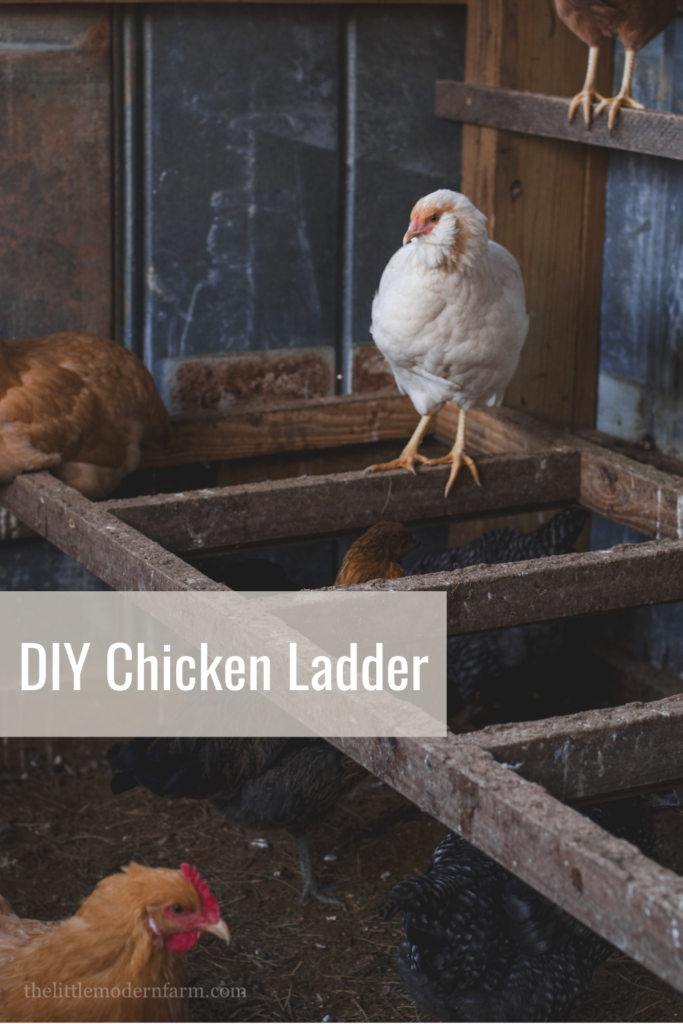
More from the farm
Cornish Rock Cross Chickens-An honest review
Heating A Chicken Coop Without Electricity
Want to stay up to date on my latest recipes, chicken tips, and raising hogs? Sign up for my email list!
[…] also need roosting bars. Chickens don’t like to roost on the ground at night. They prefer to be in the highest area of the […]